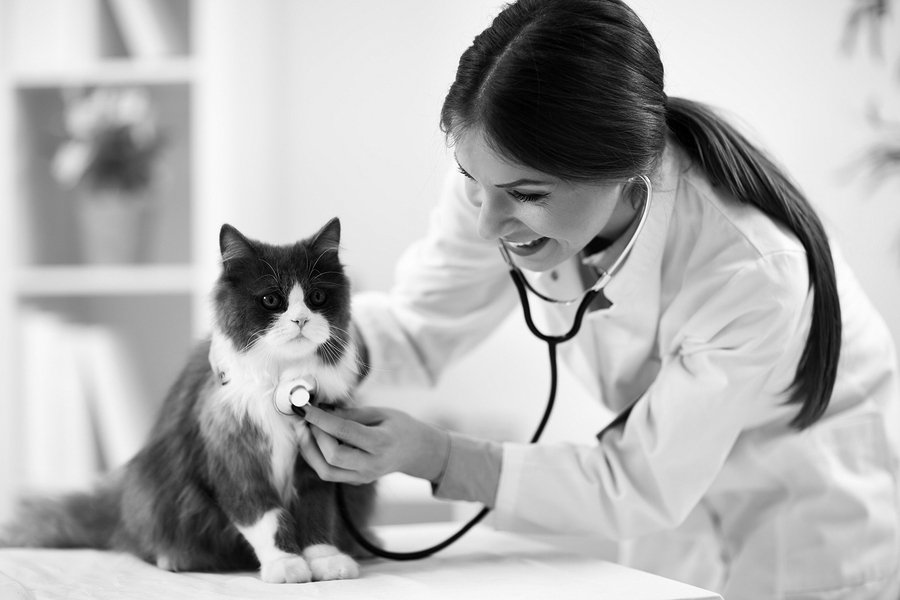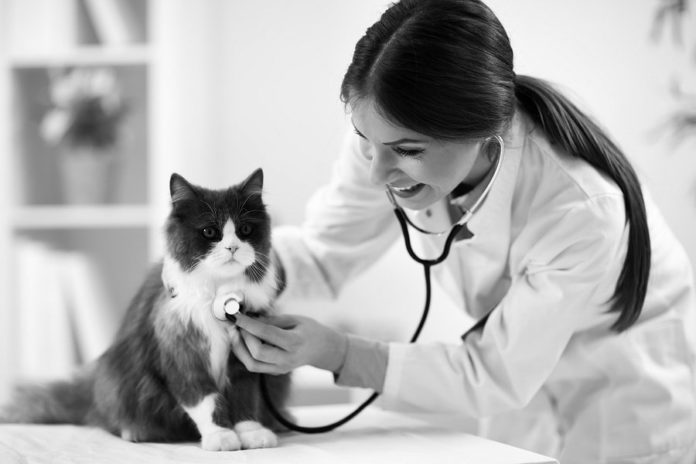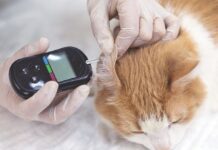We know our pets can have many of the same medical conditions we have, but can they have high cholesterol? Yes! Hypercholesterolemia, more commonly known as high cholesterol, means there’s an elevated level of cholesterol in the blood.
When we think of high cholesterol in humans, we think of a high-fat diet that causes a medical condition that heightens our risk of heart disease. “The prevalence of high cholesterol in dogs and cats isn’t known, but high cholesterol is more common in dogs than cats,” says Meredith Miller, DVM, ACVIM, a lecturer in small animal medicine at Cornell University College of Veterinary Medicine.
© didesign | Bigstock


Evolutionary Advantage. Because dogs and cats are carnivores naturally designed to consume a high-fat diet and metabolize fat more efficiently, they aren’t predisposed to heart disease like people.
However, it doesn’t mean they’re in the clear. There is an upper threshold for a healthy level of fat in the diet, and when that safe threshold has been breeched, cats become at risk for obesity and medical conditions associated with obesity, such as diabetes mellitus.
“Cholesterol is a modified steroid and a type of lipid/fat, and another major lipid is triglyceride,” says Dr. Miller. “Hyperlipidemia is a catchall for increased cholesterol and/or triglycerides. Increases in cholesterol can indicate a problem with the liver, adrenal glands or metabolic disorders, including diabetes mellitus.
“Cats can have high cholesterol with chronic kidney disease and disorders of their biliary tree,” she says. The biliary tree, or biliary system, refers to the liver, gallbladder and bile ducts and how they work together.
Recognizing overt signs of high cholesterol is difficult. “Most often there are no clinical signs associated with high cholesterol itself. More often the signs may reflect an underlying disease process that is causing high cholesterol. Sometimes lipids can accumulate in the eye causing it to turn white,” says Dr. Miller.
Other signs of high cholesterol include:
- Episodes of vomiting and diarrhea
- Abdominal pain
- Seizures
- Yellowish bumps on the skin filled with a greasy substance.
If your cat has these or any other unusual signs, it’s imperative to see his veterinarian to check for underlying medical problems.
Hyperlipidemia can be primary (genetic or idiopathic, unknown cause) or secondary to other conditions. While primary hyperlipidemia is uncommon in cats, a rare few may have an inherited condition. Secondary hyperlipidemia is much more common and concerning because it may indicate an underlying medical condition, such as:
- Diabetes mellitus
- Obesity
- Pancreatitis (inflammation of the pancreas)
- Hyperadrenocortism (over active adrenal gland)
- Cholestasis (bile duct blockage)
- Nephrotic syndrome (a kidney disorder).
Elevated blood cholesterol levels are caused by increased triglycerides, cholesterol or both, and normally occur within 30 minutes to two hours of eating a meal. The effects usually last anywhere from three to 10 hours, but if the levels remain elevated for 12 hours or longer, it typically indicates hyperlipidemia.
Diagnosing hyperlipidemia is relatively straightforward. After a physical exam, the veterinarian will review your cat’s medical history and discuss his diet. “High cholesterol is diagnosed on a serum biochemistry blood test that should be performed after a 12-hour fast,” Dr. Miller says. Your cat may be hospitalized to ensure a strict fast — and your peace of mind.
If the results come back with cholesterol over 200 mg/dl and/or a triglyceride level exceeding 100 mg/dl (measurements of glucose in the blood), the diagnosis will be hyperlipidemia. The veterinarian will do additional tests looking for underlying medical conditions, and if necessary, begin treatment of them.
“Identifying and treating any metabolic underlying causes of high cholesterol is paramount,” says Dr. Miller. If no other cause is found, changing the diet should be considered. The first treatment is switching your cat to a low-fat diet with less than 20 percent fat, which may mean getting the food directly from your veterinarian. An ultra low-fat diet is less than 10 percent fat. For some cats, commercial diets may not work sufficiently, so it may be necessary to work with a veterinary nutritionist to create an appropriate diet. Medications will be prescribed if diet alone doesn’t regulate cholesterol within normal levels.
“High cholesterol in itself is not life threatening,” says Dr. Miller. “The important concern is identifying and properly managing an underlying disease so your cat can live a high-quality life.”




